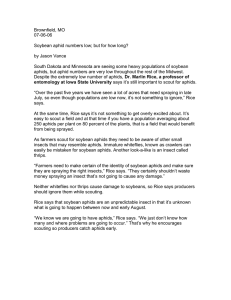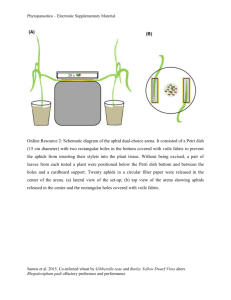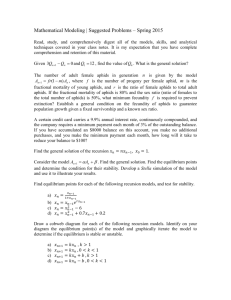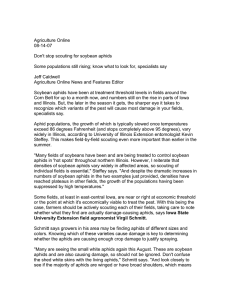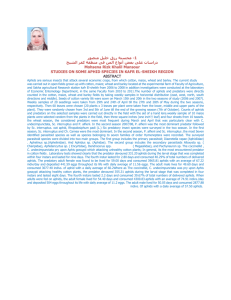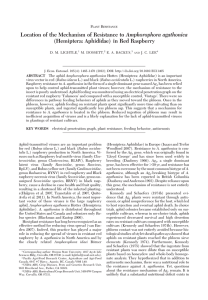Agri News, MN 07-03-07 Farmers urged to scout fields for soybean aphids
advertisement
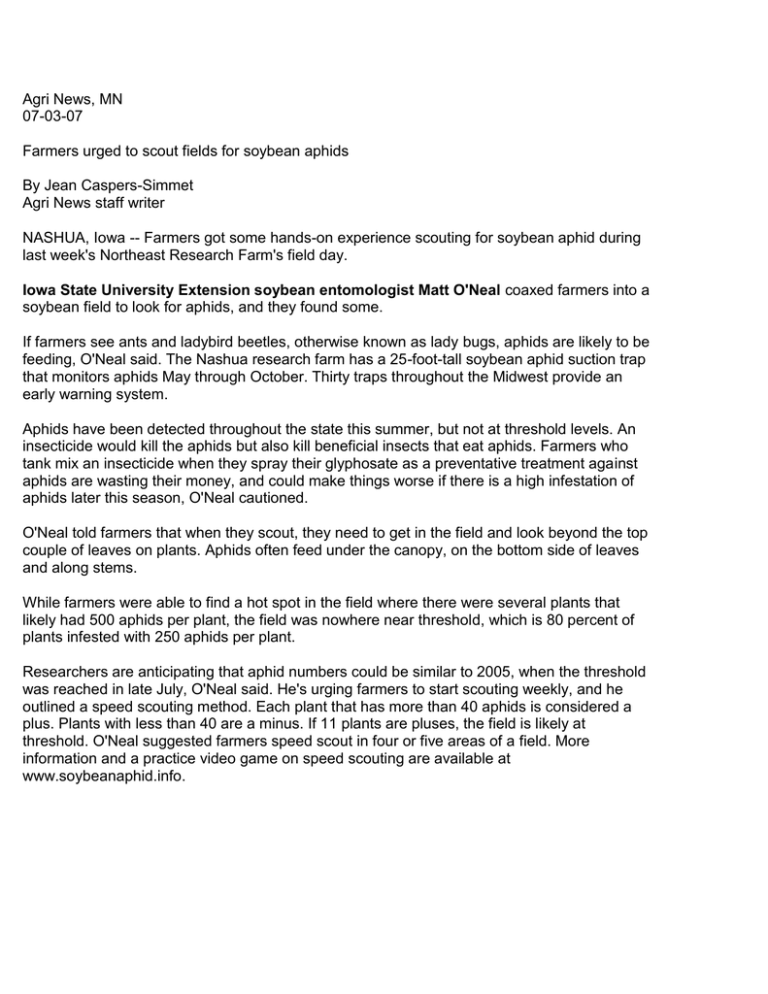
Agri News, MN 07-03-07 Farmers urged to scout fields for soybean aphids By Jean Caspers-Simmet Agri News staff writer NASHUA, Iowa -- Farmers got some hands-on experience scouting for soybean aphid during last week's Northeast Research Farm's field day. Iowa State University Extension soybean entomologist Matt O'Neal coaxed farmers into a soybean field to look for aphids, and they found some. If farmers see ants and ladybird beetles, otherwise known as lady bugs, aphids are likely to be feeding, O'Neal said. The Nashua research farm has a 25-foot-tall soybean aphid suction trap that monitors aphids May through October. Thirty traps throughout the Midwest provide an early warning system. Aphids have been detected throughout the state this summer, but not at threshold levels. An insecticide would kill the aphids but also kill beneficial insects that eat aphids. Farmers who tank mix an insecticide when they spray their glyphosate as a preventative treatment against aphids are wasting their money, and could make things worse if there is a high infestation of aphids later this season, O'Neal cautioned. O'Neal told farmers that when they scout, they need to get in the field and look beyond the top couple of leaves on plants. Aphids often feed under the canopy, on the bottom side of leaves and along stems. While farmers were able to find a hot spot in the field where there were several plants that likely had 500 aphids per plant, the field was nowhere near threshold, which is 80 percent of plants infested with 250 aphids per plant. Researchers are anticipating that aphid numbers could be similar to 2005, when the threshold was reached in late July, O'Neal said. He's urging farmers to start scouting weekly, and he outlined a speed scouting method. Each plant that has more than 40 aphids is considered a plus. Plants with less than 40 are a minus. If 11 plants are pluses, the field is likely at threshold. O'Neal suggested farmers speed scout in four or five areas of a field. More information and a practice video game on speed scouting are available at www.soybeanaphid.info.
